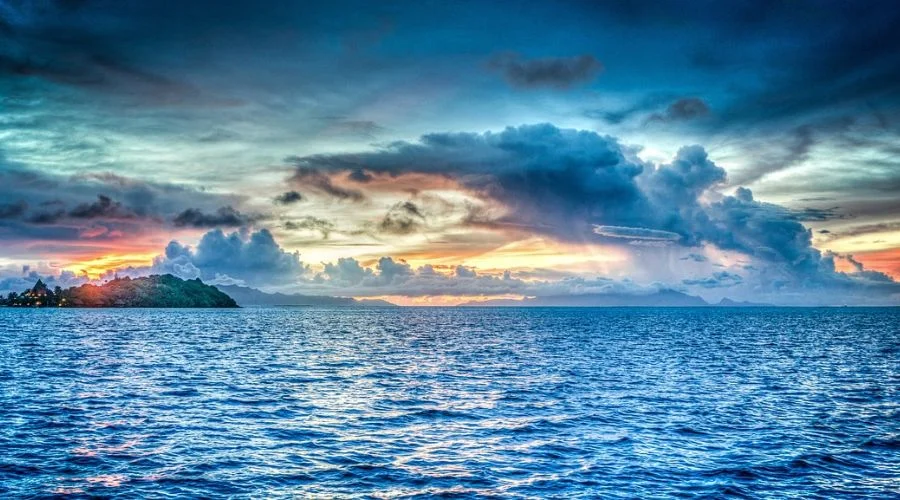Welcome to the ultimate guide to Galactic Getaways – your one-stop resource for discovering the most awe-inspiring destinations and experiences that space tourism has to offer! As the final frontier becomes more accessible than ever, thanks to groundbreaking advancements in technology, it’s time to start dreaming of voyages beyond our pale blue dot. Whether you’re a seasoned astronaut or a starry-eyed novice, our carefully curated list of top destinations and experiences will ignite your wanderlust and fuel your imagination. So, buckle up and prepare for lift-off as we embark on an interstellar journey, exploring cosmic wonders, otherworldly landscapes, and gravity-defying adventures that will redefine your perception of a vacation. Your ticket to the cosmos awaits – it’s time to embrace the boundless possibilities of space tourism!
The History of Space Tourism
The concept of space tourism has its roots in the early days of human space exploration. As the United States and the Soviet Union raced to conquer the cosmos during the Cold War, the idea of ordinary citizens traveling to space became a popular topic in science fiction and popular culture. While the initial focus of space programs was on military and scientific objectives, visionaries such as Gerard K. O’Neill and Arthur C. Clarke predicted a future where humans would live and work in space, paving the way for tourism in the final frontier.
The first instances of space tourism can be traced back to the 1980s, when private citizens lobbied to fly aboard the NASA Space Shuttle. While these efforts were largely unsuccessful, the dream of space tourism persisted. In 2001, American businessman Dennis Tito became the first-ever space tourist, paying $20 million for an eight-day trip to the International Space Station (ISS) aboard a Russian Soyuz spacecraft. Tito’s journey sparked a new era in space tourism, with six more tourists visiting the ISS between 2001 and 2009.
Over the past two decades, the space tourism industry has experienced steady growth, fueled by advances in technology and the emergence of private companies dedicated to commercializing space travel. Today, space tourism is on the cusp of becoming a reality for a growing number of adventurous travelers, with a wide array of experiences and destinations on offer. As we delve into the exciting world of space tourism, let’s explore the top destinations and experiences available today and in the near future.
Top Space Tourism Companies
The modern space tourism industry is dominated by a handful of major players, each offering unique experiences and pushing the boundaries of space travel. Leading the charge is SpaceX, the company founded by billionaire entrepreneur Elon Musk. SpaceX has ambitious plans for space tourism, ranging from trips around the moon to eventual colonization of Mars. In the meantime, the company is also working on a project called Starship, which aims to provide rapid point-to-point transportation on Earth by traveling through space.
Another key player in the space tourism industry is Blue Origin, a private spaceflight company founded by Amazon CEO Jeff Bezos. Blue Origin’s New Shepard rocket has been designed specifically for suborbital space tourism, offering passengers a brief but exhilarating journey to the edge of space. With a focus on reusable rocket technology and an emphasis on safety, Blue Origin aims to make space tourism accessible and affordable for the masses.
Virgin Galactic, founded by Sir Richard Branson, is another major contender in the space tourism race. The company’s SpaceShipTwo vehicle is designed to carry passengers on suborbital spaceflights, offering a once-in-a-lifetime experience that includes several minutes of weightlessness and stunning views of Earth from the edge of space. Virgin Galactic has already sold hundreds of tickets for future spaceflights, with commercial operations expected to begin in the coming years.
The International Space Station Experience
The International Space Station (ISS) has been a symbol of international cooperation and scientific achievement for over two decades. Orbiting Earth at an altitude of roughly 250 miles, the ISS has hosted astronauts from around the world, conducting groundbreaking research and fostering a shared understanding of our planet and its place in the cosmos. For a select few, the ISS has also offered an unparalleled space tourism experience, providing an exclusive glimpse into the life of an astronaut and a breathtaking view of Earth from above.
Visiting the ISS as a space tourist requires a significant financial investment, with trips typically costing tens of millions of dollars. However, for those able to afford the journey, the experience is truly one-of-a-kind. Traveling aboard a Russian Soyuz spacecraft, space tourists spend approximately two weeks on the ISS, participating in daily activities alongside professional astronauts, conducting experiments, and observing the Earth below. The highlight of the trip is undoubtedly the opportunity to gaze upon our planet from the Cupola, a large windowed observatory module that offers a 360-degree view of Earth and the surrounding cosmos.
While the number of space tourists who have visited the ISS remains small, the future of space tourism on the station is promising. NASA has announced plans to open the ISS to commercial opportunities, including space tourism, paving the way for more private citizens to experience the wonders of life in orbit. Additionally, Axiom Space, a private company specializing in space infrastructure, has plans to build a commercial module on the ISS, specifically designed to accommodate space tourists and provide a luxurious orbital experience.
Suborbital Spaceflights
For those seeking a taste of space without the lengthy commitment of an ISS trip, suborbital spaceflights offer a more accessible and affordable alternative. These brief journeys to the edge of space provide passengers with several minutes of weightlessness, stunning views of Earth, and the exhilaration of traveling at supersonic speeds. With a number of private companies developing suborbital space tourism vehicles, this exciting experience is poised to become a reality for many in the near future.
Virgin Galactic’s SpaceShipTwo is one such vehicle, designed to carry passengers on a thrilling suborbital spaceflight. Launched from a mothership at high altitude, SpaceShipTwo’s rocket engine propels the craft to the edge of space before gliding back to Earth for a runway landing. Throughout the flight, passengers experience several minutes of weightlessness and breathtaking views of our planet, as well as the blackness of space and the curvature of the Earth.
Blue Origin’s New Shepard rocket is another vehicle designed for suborbital space tourism. Launched vertically from a launchpad, New Shepard carries passengers to an altitude of over 62 miles, offering a few minutes of weightlessness and spectacular views of Earth. The reusable rocket and capsule then return to Earth separately, with the capsule landing gently under parachutes.
As these companies prepare to launch commercial operations, suborbital spaceflights are set to become a popular and more accessible form of space tourism, offering an unforgettable glimpse into the cosmos for those bold enough to embark on the journey.
Lunar Vacations: Trips to the Moon
The moon has long captivated the human imagination, serving as a source of wonder and inspiration for millennia. As the closest celestial body to Earth, the moon represents the next logical step in human space exploration and tourism. While no human has set foot on the lunar surface since the Apollo 17 mission in 1972, the prospect of lunar vacations is becoming increasingly plausible as technology advances and private companies invest in lunar exploration.
In 2018, SpaceX announced plans to send a private passenger on a trip around the moon aboard its Starship spacecraft, marking the first lunar tourism mission in history. While the timeline for this mission remains uncertain, the announcement has fueled excitement and anticipation for lunar vacations. Furthermore, NASA’s Artemis program aims to return astronauts to the moon by 2024, potentially paving the way for future lunar tourism opportunities.
Lunar vacations would offer a truly otherworldly experience, with visitors exploring the stark and desolate lunar landscape, marveling at Earthrise from the lunar horizon, and taking in the vastness of the cosmos from a unique vantage point. While it may be some years before lunar vacations become a reality, the prospect of visiting our celestial neighbor is an exhilarating one, promising to redefine the very concept of a getaway.
Mars Expeditions: The Future of Space Travel
Mars, the fourth planet from the sun and our closest planetary neighbor, has long been a subject of fascination and scientific inquiry. With its striking red appearance and tantalizing hints of water and past life, Mars represents the ultimate frontier for human space exploration and colonization. While the prospect of Mars expeditions and tourism may seem like the stuff of science fiction, ambitious plans to visit and eventually settle the Red Planet are already taking shape.
SpaceX’s founder, Elon Musk, has made no secret of his desire to colonize Mars and establish a self-sustaining human presence on the planet. With the development of the Starship spacecraft, SpaceX is working towards making this vision a reality. While the timeline for Mars expeditions and colonization remains uncertain, the prospect of humans visiting and living on the Red Planet is becoming increasingly feasible as technology advances and our understanding of the planet deepens.
A journey to Mars would be unlike anything experienced by space tourists thus far, with the voyage taking several months and requiring extensive preparation and training. Upon arrival, visitors would be greeted by a hostile and alien environment, with a thin atmosphere, frigid temperatures, and imposing geological features such as the largest volcano in the solar system, Olympus Mons. Despite these challenges, the opportunity to explore and potentially colonize a new world is a tantalizing one, offering unparalleled adventure and the promise of a new chapter in human history.
The Cost of Space Tourism
As with any nascent industry, the cost of space tourism remains high, with prices ranging from hundreds of thousands to tens of millions of dollars, depending on the experience. A trip to the International Space Station, for example, can cost upwards of $50 million, while a suborbital spaceflight with Virgin Galactic or Blue Origin is expected to cost between $200,000 and $250,000 per ticket.
While these prices may be prohibitive for many, it is worth noting that the cost of space tourism is likely to decrease as the industry matures and technology advances. Furthermore, as competition among private space companies intensifies, it is possible that prices will fall, making space tourism more accessible for a broader range of travelers.
Additionally, the development of new space tourism experiences, such as point-to-point transportation through space, may offer more affordable alternatives to traditional space travel, opening up the cosmos to an even wider audience. As the space tourism industry evolves, it is likely that new and innovative experiences will emerge, offering a variety of options for travelers of all budgets.
Preparing for a Space Journey: Training and Requirements
Embarking on a space journey is not for the faint of heart, as it requires physical fitness, mental fortitude, and a willingness to undergo rigorous training. While the specific training requirements for space tourism will vary depending on the company and experience, prospective space travelers can expect to undergo a range of activities designed to prepare them for the rigors of spaceflight.
For example, suborbital spaceflight passengers with Virgin Galactic are required to complete a multi-day training program that includes physical fitness assessments, G-force acclimation, and instruction in safety procedures. Similarly, travelers to the International Space Station must complete months of training, including Russian language lessons, zero-gravity simulations, and emergency drills.
As the space tourism industry grows and diversifies, it is likely that training requirements will continue to evolve, with companies tailoring programs to meet the unique needs of their passengers. Regardless of the specific training regimen, the objective remains the same: to ensure that space travelers are prepared for the physical and mental challenges of their journey, and equipped to make the most of their once-in-a-lifetime experience.
The Future of Space Tourism and Its Impact on Earth
The future of space tourism is bright, with a growing number of companies and experiences catering to a diverse range of interests and budgets. As technology advances and the cost of space travel decreases, it is likely that space tourism will become more accessible and mainstream, offering new opportunities for adventure, exploration, and discovery.
Beyond the immediate thrill of space travel, the burgeoning space tourism industry also has the potential to yield significant benefits for life on Earth. The development of reusable rocket technology, for example, has the potential to revolutionize transportation on our planet, reducing travel times and lowering the environmental impact of air travel. Additionally, the growth of the space tourism industry is likely to spur further investment in space exploration and research, deepening our understanding of the cosmos and our place in it.
As we stand on the cusp of a new era in space tourism, it is clear that the industry is poised to transform not only the way we travel but also our relationship with the cosmos and our understanding of our own planet. With a universe of possibilities at our fingertips, the future of space tourism promises to be an exciting and transformative journey for all who dare to embrace the boundless potential of the final frontier.
Conclusion
Galactic Getaways is your guide to the awe-inspiring world of space tourism, offering a glimpse into the thrilling experiences and destinations available to intrepid travelers. From the groundbreaking history of space tourism to the cutting-edge technology propelling the industry forward, our exploration of the cosmos is just beginning. As we embark on this exciting journey into the unknown, let us embrace the spirit of adventure and curiosity that drives us to reach for the stars and push the boundaries of what is possible. The universe awaits – are you ready to join the journey?













